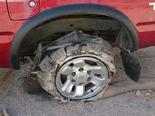In a previous blog, I wrote about the “enhanced injuries” doctrine in Florida. The doctrine stands for the proposition that a wrongdoer can be liable for damages extending beyond those resulting from the initial negligence. The example I used was of a simple car accident that triggered a defect in the victim’s vehicle, which caused a fire and catastrophic injuries well beyond the minor injuries resulting from the initial impact alone. Today’s blog is about the common characteristics associated with enhanced injury cases in the context of motor vehicle accidents and the various defects leading to those accidents.
Common characteristics include:
- One or a few occupants are catastrophically or fatally injured while others have minor or no injuries;
- Minor collisions resulting in catastrophic injury or death – see example in first paragraph;
- Severe damage to or failure of a localized area of the vehicle (examples: roof crush or seat belt collapse);
- Seat-belted occupants who are seriously injured or who are partially or fully ejected.
Typical Reasons for Enhanced Injuries:
Post-Impact Fuel Fed Fire Defects
Auto engineers agree that an occupant who survives the crash forces should not be injured or killed by a subsequent fire. Fire causing defects include:
- Fuel Tank Location & Shielding. Fuel tanks placed in positions of risk to crushing or compromise, or not adequately protected against puncture damage.
- Siphoning, Filler Tube & Fuel Line Failure: Excessive post-accident fuel leaks caused by failing to install inexpensive check-valve devices.
 Florida Injury Attorney Blawg
Florida Injury Attorney Blawg


